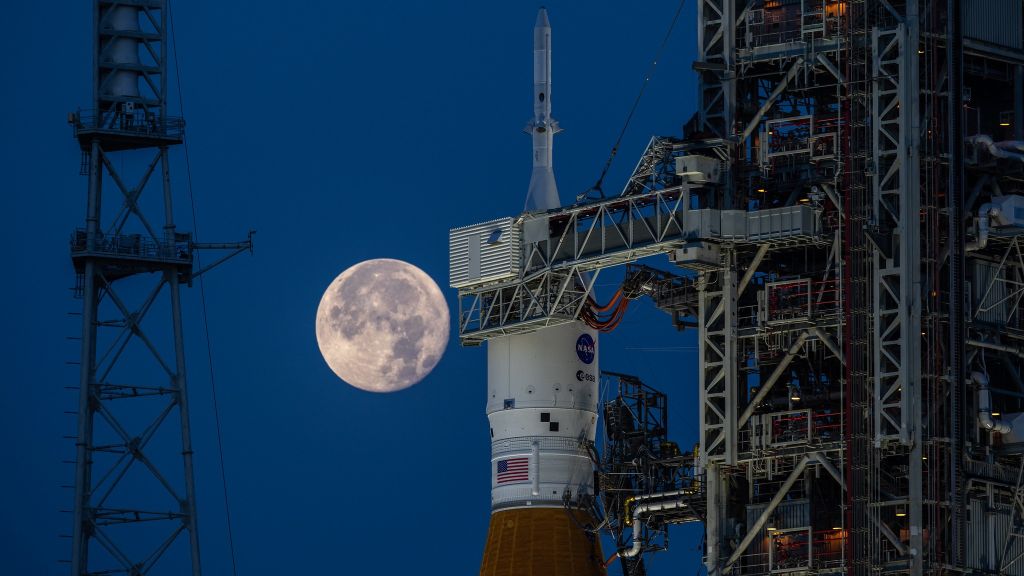July's supermoon will shine online tonight — here's how you can watch for free
The Virtual Telescope broadcast starts July 13 at 5:00 p.m. EDT.
The July Buck Supermoon will glow in an online broadcast from Rome, and you can watch it for free.
Weather permitting, the Virtual Telescope Project will start its livestream Wednesday (July 13) at 5:00 p.m. EDT (2100 GMT), allowing you to watch the third of four supermoons in a row. You can watch at the project's website or here at Space.com in the window above.
"We will admire our satellite rising above the skyline of Rome, the Eternal City, hanging above its legendary monuments," project founder Gianluca Masi wrote in a statement.
Related: Don't miss the biggest 'supermoon' of the year on July 13
The Buck Moon will be the closest supermoon of 2022. In general, a supermoon is a full moon that is near its closest approach to Earth in its orbit, known as the perigee. (The moon will appear a little bigger and brighter in the sky, although it's tough to spot the difference with the naked eye.)
While definitions of "supermoon" vary, NASA eclipse watcher Fred Espenak counts July's full moon as the third of four supermoons in a row. In New York City, you can catch the almost-full set around 4:55 a.m. local time July 13, according to timeanddate.com, and the slightly waning moon will rise again at 9 p.m.

Viewers seeking the full moon in person will enjoy a slightly better view of its craters and mountains with binoculars or a telescope. It's a good time to look at the supermoon, as the full moon tends to wash out fainter targets in the sky, like galaxies or nebulas.
Get the Space.com Newsletter
Breaking space news, the latest updates on rocket launches, skywatching events and more!

Looking for a telescope to see the supermoon? We recommend the Celestron Astro Fi 102 as the top pick in our best beginner's telescope guide.
If you're hoping to photograph the moon, check out our best cameras for astrophotography and best lenses for astrophotography. Also read our guide on how to photograph the moon with a camera for some helpful tips to plan out your lunar photo session.
Editor's Note: If you snap an amazing moon photo and would like to share it with Space.com's readers, send your photo(s), comments, and your name and location to spacephotos@space.com.
Editor's note: This story has been updated as the broadcast time has changed. Follow Elizabeth Howell on Twitter @howellspace. Follow us on Twitter @Spacedotcom and on Facebook.
Join our Space Forums to keep talking space on the latest missions, night sky and more! And if you have a news tip, correction or comment, let us know at: community@space.com.

Elizabeth Howell (she/her), Ph.D., was a staff writer in the spaceflight channel between 2022 and 2024 specializing in Canadian space news. She was contributing writer for Space.com for 10 years from 2012 to 2024. Elizabeth's reporting includes multiple exclusives with the White House, leading world coverage about a lost-and-found space tomato on the International Space Station, witnessing five human spaceflight launches on two continents, flying parabolic, working inside a spacesuit, and participating in a simulated Mars mission. Her latest book, "Why Am I Taller?" (ECW Press, 2022) is co-written with astronaut Dave Williams.









